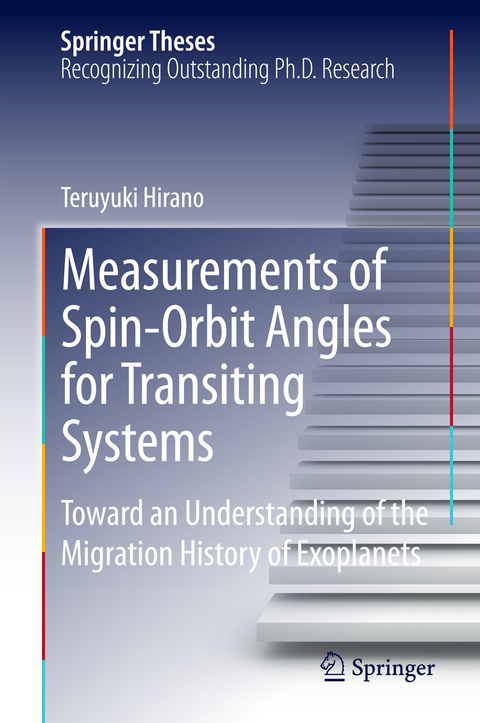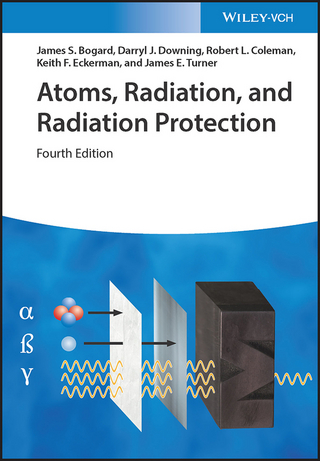Measurements of Spin-Orbit Angles for Transiting Systems
Toward an Understanding of the Migration History of Exoplanets
Seiten
This thesis presents methods for probing spin-orbit angle, the relation between the stellar spin axis and planetary orbital axis, accurately analyzing spin-orbit angle for many transiting exoplanetary systems, including a novel multiple transiting system.
This thesis presents accurate analyses of the spin-orbit angle for many remarkable transiting exoplanetary systems, including the first measurement of the Rossiter-McLaughlin effect for a multiple transiting system.
The author presents the observational methods needed to probe the spin-orbit angle, the relation between the stellar spin axis and planetary orbital axis. Measurements of the spin-orbit angle provide us a unique and valuable opportunity to understand the origin of close-in giant exoplanets, called "hot Jupiters".
The first method introduced involves observations of the Rossiter-McLaughlin effect (RM effect). The author points out the issues with the previous theoretical modeling of the RM effect and derives a new and improved theory. Applications of the new theory to observational data are also presented for a number of remarkable systems, and the author shows that the new theory minimizes the systematic errors by applying it to the observational data.
The author also describes another method for constraining the spin-orbit angle: by combining the measurements of stellar flux variations due to dark spots on the stellar surface, with the projected stellar rotational velocity measured via spectroscopy, the spin-orbit angles "along the line-of-sight" are constrained for the transiting exoplanetary systems reported by the Kepler space telescope.
This thesis presents accurate analyses of the spin-orbit angle for many remarkable transiting exoplanetary systems, including the first measurement of the Rossiter-McLaughlin effect for a multiple transiting system.
The author presents the observational methods needed to probe the spin-orbit angle, the relation between the stellar spin axis and planetary orbital axis. Measurements of the spin-orbit angle provide us a unique and valuable opportunity to understand the origin of close-in giant exoplanets, called "hot Jupiters".
The first method introduced involves observations of the Rossiter-McLaughlin effect (RM effect). The author points out the issues with the previous theoretical modeling of the RM effect and derives a new and improved theory. Applications of the new theory to observational data are also presented for a number of remarkable systems, and the author shows that the new theory minimizes the systematic errors by applying it to the observational data.
The author also describes another method for constraining the spin-orbit angle: by combining the measurements of stellar flux variations due to dark spots on the stellar surface, with the projected stellar rotational velocity measured via spectroscopy, the spin-orbit angles "along the line-of-sight" are constrained for the transiting exoplanetary systems reported by the Kepler space telescope.
Dr. Teruyuki Hirano The University of Tokyo Current affiliation : Tokyo Institute of Technology hirano@geo.titech.ac.jp
Introduction.- Evolution History of Extrasolar Planetary Systems.- Improved Modeling of the Rossiter-McLaughlin Effect.- New Observations and Improved Analyses of the Rossiter-McLaughlin Effect.- Toward the Measurements of Spin-Orbit Relations for Small Planets.- Summary and Future Prospects.
| Reihe/Serie | Springer Theses |
|---|---|
| Zusatzinfo | 25 Illustrations, color; 20 Illustrations, black and white; XV, 134 p. 45 illus., 25 illus. in color. |
| Verlagsort | Tokyo |
| Sprache | englisch |
| Maße | 155 x 235 mm |
| Themenwelt | Naturwissenschaften ► Physik / Astronomie ► Angewandte Physik |
| Naturwissenschaften ► Physik / Astronomie ► Astronomie / Astrophysik | |
| Technik ► Luft- / Raumfahrttechnik | |
| ISBN-10 | 4-431-54585-9 / 4431545859 |
| ISBN-13 | 978-4-431-54585-9 / 9784431545859 |
| Zustand | Neuware |
| Haben Sie eine Frage zum Produkt? |
Mehr entdecken
aus dem Bereich
aus dem Bereich




